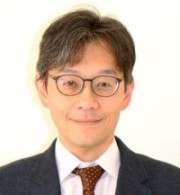 The 263rd Special CMSM Seminar
The 263rd Special CMSM Seminar Germanium spintronics with Co2-Heusler alloys
Germanium spintronics with Co2-Heusler alloys
Prof. Kohei Hamaya
Center for Spintronics Research Network,
Graduate School of Engineering Science,
Osaka University
Date & Time: 14:00 - 15:00, Janualy 30th (Tue), 2024.
Place: 2nd Conference Room, 1F, Main Bldg., Sengen site.
Abstract:
The further developments of semiconductor technologies will become the core of the industries in artificial intelligence, electric vehicles, and some related future technologies. Since an increase in the power consumption in data centers can be one of the serious problems in the near future, novel semiconductor devices with ultra-low power consumption will have to be developed by using technologies other than the miniaturization of the channel length of silicon (Si) metal-oxide-semiconductor field-effect transistors (MOSFET). It has been considered that an enhancement in the current drivability in the MOSFET channel by using germanium (Ge) having higher electron and hole mobility than Si is promising for a technology of next-generation complementary metal oxide semiconductor (CMOS) transistors1). In addition, the high-quality growth of strained Ge layers on Si can open a way for achieving photonics on the Si platform2). If Ge-based spintronic technologies were also developed on the Si platform, one can achieve a novel electron-photon-spin integrated circuit on Si for ultra-low power consumption electronics (memories) and photonics (telecommunication) in future. In this seminar, we introduce some potentials of Ge and how to integrate spintronics with Ge on Si. To develop Ge-based spintronics devices, we show a method for electrical spin injection/detection at room temperature and highly efficient spin transport using Co2-Heusler alloy/Ge heterostructures3) and strained SiGe channel4), respectively.
1) A. Toriumi and T. Nishimura, Jpn. J. Appl. Phys. 57, 010101 (2018).
2) J. Michel et al., Nat. Photon. 4, 527 (2010).
3) K. Hamaya et al., J. Phys. D: Appl. Phys. 51, 393001 (2018); M. Yamada et al., NPG Asia Mater. 12, 47 (2020).
4) T. Naito et al., Phys. Rev. Applied 13, 054025 (2020); Phys. Rev. Applied 18, 024005 (2022).
(Contact)
Yuya Sakuraba, Magnetic Functional Device Gr.
E-mail:
SAKURABA.Yuya[at]nims.go.jp

